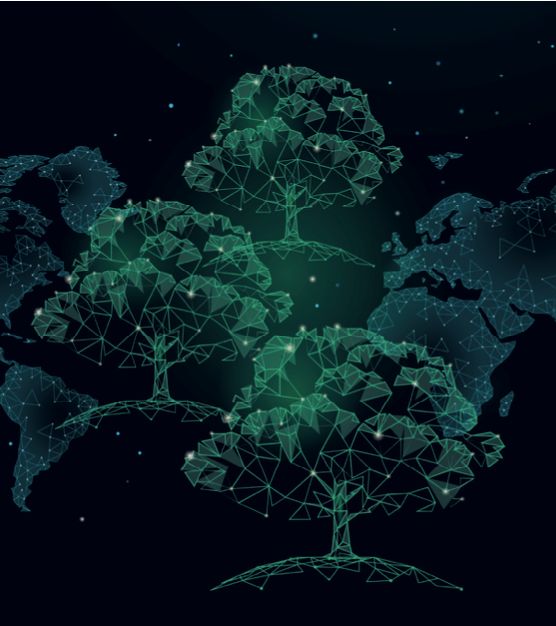As climate change continues to accelerate, businesses must assess and manage their environmental risk.
When he took over as BP’s CEO, Tony Hayward established several policies for reducing safety risks, including using lids on coffee cups while walking. But his focus on cutting costs led to the elimination of several environmental positions in the company, based on his perception that BP was “excessively cautious” in its strategy to move “beyond petroleum” under John Browne’s leadership – and needed to refocus on core business.
As this example shows, some risks are understood and managed by most firms, but other risks can lurk “below the radar” – where they can inflict the greatest damage. One of the elusive – and growing – threats is generated in the interaction between a company and the natural environment.
Environmental risks are difficult to monitor and manage. One reason for this is that most environmental risks exist in a company’s external environment, where the business has little ability to directly impact them. Second, there are many environ- mental risks, including those related to climate change, water, energy use, waste and biodiversity and these are often inter- connected. Third, environmental risks play out across many different spatial (e.g. local to global) and timescales (e.g. short- term acute to centuries-long processes). And finally, environmental risks are not often reflected in terms of price signals or regu- latory constraints; and when these signals come, they tend to be abrupt and disruptive.
Environmental impacts are increasing
Environmental events are increasingly impacting the bottom line. In 2011, devastating floods struck Thailand. With suppliers of critical auto parts knocked out, the production of Toyota, Honda and other carmakers fell by hundreds of thousands of vehicles (and Toyota’s earnings dropped $1.5bn).
In 2012, when Hurricane Sandy hit the East Coast, Lower Manhattan lost power for four days, resulting in more than $500 million in direct damages for Con Edison – and costs to New York City businesses totalling $6bn.
Experts are predicting that drought in California will cost the state $2.2bn this year, resulting in a loss of more than 17,000 agricultural jobs. Around the world, these events are increasing in scale and frequency, and threaten to rock business operations and supply chains to the core.
To identify and prioritize risks, businesses need a systematic way to monitor their external environment, tracking trends and sensing emerging weak signals. They also need to be in close contact with their stakeholders – customers, employees, suppliers, governments, NGOs and the public – to know what issues they are focused on. Not all trends are equal and some are more relevant to companies and supply chains. To manage risks, businesses must prioritize issues most relevant to them and their supply chains. Materiality assessment is a powerful methodology for evaluating the risk landscape, considering both the importance of the issue to the company and the stakeholders’ level of engagement.
Coca-Cola’s experience in India
Businesses face a variety of complex risks, from political instability to currency fluctuations. However, environmental factors are increasingly relevant to business, due to both direct impacts and indi- rect consequences. There are direct envi- ronmental risks that threaten business’s raw materials and partners, including storms, floods or droughts. There are also indi- rect environmental risks comprising increasing costs, new regulations, public scrutiny, conflicts with other stake- holders and political conflict. It is often difficult to distinguish between local and global risks, or to manage independently the complicated interactions between different factors. Coca-Cola’s experience in India highlights this challenge.
For Coca-Cola, India is one of the fastest-growing markets in the world. But widespread depletion and contamination of water resources has created significant challenges as the company attempts to secure access to its primary ingredient. For Coca- Cola’s India division, problems began in the early 2000s when local activists in a drought- plagued region began to target the company for selling products contaminated with pesticides and draining local aquifers.
While the initial tensions were isolated to specific Indian communities near bottling facilities, the criticisms began to circulate more widely over time – e.g. broadcast by a blogger with activist connections based in San Francisco, highlighted by The Body Shop’s CEO Anita Roddick in her blog, and ultimately picked up by the BBC. When a BBC reporter wrote a controversial story about Coca-Cola’s water practices in India, it became a global headline. At the same time, an Indian NGO campaigned for new government policies on pesticide contamination by questioning the quality of Coca-Cola’s products.
Finally, student groups in the US became alarmed by the accusations, and organized campaigns to remove Coca-Cola’s vending machines from their campuses. What began as a local skirmish over water use became a global crisis with significant negative impacts on sales and reputation both in India and globally.
A customized and multi-faceted approach
This story highlights the complex dynamics of managing environmental risks, and why they require a 360-degree multi-faceted approach. In assessing the potential impacts of environmental risks, companies should consider the following:
- Resource degradation – what pressures will environmental conditions exert on the company’s local operations?
- Supply reliability–how might environmental trends impact our supply of raw materials?
- Cost impacts – as resources become stretched, how might rising costs across the supply chain alter our business model?
- Policy–how might new regulations, or failure to comply with existing regulations, affect our business?
- Efficiency – how much value are we producing per unit of resource inputs? Can we decouple growth from resource use?
- Social tensions and conflict – what risks might emerge as more people attempt to access the same resources?
The world is a risky place, and it is impossible to anticipate how risks will unfold or impact business. Companies can create an organizational capability to evaluate, prioritize, and track risks over time. An effective risk management process brings together people from across the organization – different functions, geographies and parts of the supply chain – to develop a shared point of view on company priorities. A generic one-size-fits- all approach will not work because each enter- prise has unique exposures and opportunities. This internal consensus can guide the company’s investments in mitigating risk, and creating value.
The process of risk assessment is powerful – not just the conclusions. By engaging across functions and with stakeholders, companies can develop a shared language around their priority issues. Often, there is a disconnect between the scientific information about environmental issues and a company’s perception of their accountabilities and risks related to the issue. However, the risk process helps to translate these factors into organizationally-relevant terms. For example, while climate change is a global issue, it is not always easy to articulate a particular company’s stake in mitigating and adapting to climate volatility. Risk assessment can help characterize and quantify the company’s specific interest and justify its investment in addressing risk.
Outdoor gear manufacturer Patagonia provides an interesting example of proactively addressing its risks by engaging other stake- holders in the process. After extensively evaluating the environmental impacts of specific products across their global supply chain, Patagonia launched a public website “Footprint Chronicles”, to document the environmental impacts of raw materials, manufacturing and distribution around the world. On this site, it not only shared its total environ- mental footprint, but also invited its partners, suppliers and the general public to share ideas to solve challenges. Instead of hiding weaknesses, the company is using the power of transparency to crowdsource innovations to improve its business.
Turning risk into opportunity
Another hurdle for implementing risk assessment is the perception that high risks equate to poor performance. Employees can resist the risk process because they sense that acknowledging risks may be viewed by their managers as evidence they are doing something wrong. However, significant risks can and do exist, and can emerge rapidly even when the company is doing all the right things. Risks are facts of the external environment, and should not be seen as a failure of the business. Rather, the goal should be to understand deeply, mitigate priority risks where you have the ability and the resources to do so, and engage partners creatively where the risks are systemic. This will not eliminate the risks (though it may reduce them) but it will help you become more resilient to potential impacts.
Unilever’s diverse portfolio of products ranges from nutrition to hygiene to personal care, and every aspect of its business – from raw material sourcing to manufacturing to consumer use – impacts on the environment. While the company has long been focused on the risks related to environment, it has established a true leadership position on the environ- ment under CEO Paul Polman’s leadership. Based on an assessment of its material issues, Unilever has established an aspirational goal to double its
revenues over the next decade while reducing its environmental impacts by 50%. Achieving this goal will require more than mitigation efforts and efficiency – but demands a radical rethinking of the company’s product portfolio, supply chain, business model, and engagement with consumers. Driven by this ambitious goal, Unilever is pivoting toward an inherently more sustainable enterprise that creates value by aligning its strategy to the world’s biggest environmental challenges.
Risk as an innovation catalyst
While risk assessment is often seen as purely defensive, it can and must be connected to value creation. It is not just about potential downside impacts, but about developing a unique and value- creating way of responding to challenges. This means that risk assessment cannot be outsourced to facility managers or risk specialists – it must engage the whole enterprise. An effective risk process can highlight opportunities to create new solutions and grow markets. Therefore, it is critical that a company’s business leaders, innovators, and product developers are part of the conversation.
Nike, like many of the current corporate sustainability champions, learned the hard way about the importance of sustainability risks – when revelations about labour practices in its supply chain became public. However, over the last two decades, Nike has transformed its approach to environmental risks, using it to spur creative new products, management processes, and partnerships. For example, it has recently unveiled its Flyknit shoes; the shoe’s one- piece upper uses just one material. Nike has also has been instrumental in creating innovative partner- ships focusing on climate action (BICEP) and sustain- able materials (Launch). Nike has institutionalized the connection between social and environmental issues and its innovation function by creating a new organization of Sustainable Business and Innovation (SBI).
At its core, Nike’s approach recognizes that a company can create enormous business value by embracing environmental risks, and stimulating new innovations to respond to the challenges. Environmental risks can be the most complex challenges for companies – but can also be the most rewarding to address. As challenges around climate, water, land, and waste become more acute, the imperative to protect your business and enhance your business will become even more clear.
-Daniel Vermeer, PhD, is associate professor of the practice and executive director at the Center for Energy, Development and the Global Environment (EDGE), Duke University.
An adapted version of this article appeared on the Dialogue Review website.



